C2SM Newsletter vol. 25
Download newsletter as Downloadpdf (PDF, 683 KB)vertical_align_bottom.
Topics in this Newsletter - December 2017
- News from the Steering Committee
- ICON News
- Update from the Scientific Visualization Activities
- Update: Swiss Climate Change Scenarios CH2018
- News from MeteoSwiss
- News from Empa
- Update from SPARC, the international project on Stratosphere-troposphere Processes and their Role in Climate
- New climate science webcasts
- PhD defenses in the C2SM community
- Upcoming events of interest
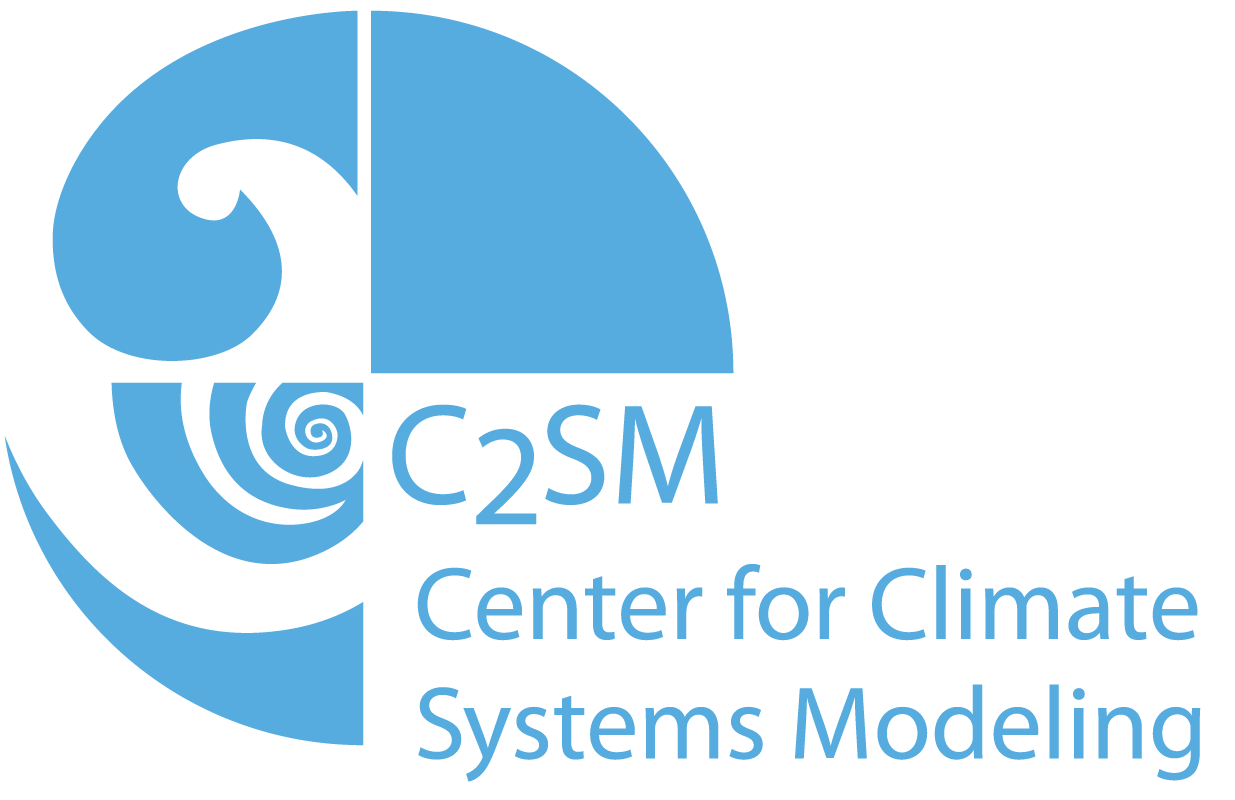
News from the Steering Committee
We regularly include information from the Steering Committee (SC) meetings and about the decisions that have been taken.
The last SC Meeting took place on 22 September 2017. It focussed on the preparation of the Plenary Assembly (summary see below) and the upcoming review of the Scientific Advisory Board (SAB) (see below). The minutes will be provided at the C2SM intranet. The next SC Meeting will take place on 8 December to prepare the SAB review in January.
The 2017 Plenary Assembly took place on 16 November 2017. We are happy to announce that at this meeting, the members unanimously decided to admit the following three new members to C2SM: Prof. Heather Stoll (ETH, D-ERDW), Prof. Daniela Domeisen (ETH, D-USYS), and external pageDr. Jens Leifeld (Agroscope)call_made. In addition, the members elected two new members of the SAB, external pageDr. Karin Ammoncall_made, Executive Director of ProClim to replace Christoph Ritz, former Executive Director of ProClim who retired, and external pageDr.Jürg Füsslercall_made, Managing Partner of the environmental consulting company INFRAS to replace David Bresch who had to quit his SAB membership by becoming professor at ETH in 2016. Welcome to the new C2SM and C2SM SAB members! Finally, Ulrike Lohmann stepped down from the Steering Committee. As her replacement, the members consented to Heini Wernli as her successor. Welcome Heini in the C2SM SC! The minutes of the Plenary 2017 will be made available to the C2SM members at the C2SM intranet.
As a preparatory measure for C2SM’s transition beyond its third phase, a review by the SAB is planned for 24/25 January 2018 at ETH Zurich. All SAB members have accepted the invitation to this meeting. During this meeting, the SAB members will assess C2SM’s past activities and achievements, its current strategy, and future plans as a preparation for an external review to follow a year later. This external review has been imposed by ETH school board as a guiding measure towards the decision whether and how to continue C2SM beyond 2020.
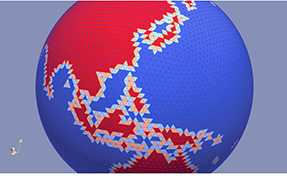
ICON News
Some members are starting to work with the ICON general circulation model. To support the communication and sharing know-how and experiences between ICON users, a C2SM icon mailing list have been created. If you wish to subscribe, please send a short email to .
Moreover, in order to facilitate exchange between ICON users/interested, C2SM organises informal ICON user lunch four times per year. At the last meeting in October, Will Sawyer gave an introduction on ICON on Piz Daint at CSCS. The next meeting will take place on early 2018. Please send an email to if you wish to attend.
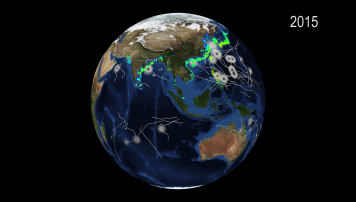
Update from the scientific visualization activities
Most of the visualization tools available on the market can be categorized as: 1) tools targeted towards a wide and diverse user base thus offering common generic representations of data and 2) tools and libraries which can create a large range of data representations, but are difficult to use. In cases where the re- quirements of a research group or a user are not met by the first set of tools, it is beneficial to work with a visualization expert and develop customized visualization frameworks around the second set of tools/libraries making them more accessible and also tuning their features to create specialized representations of data.
In the recent months, we have been developing such a framework for the group of Prof. Harald Bugmann. This framework aims at visualizing different types and species of trees as simple 3D geometrical objects and placing them into a landscape. Furthermore, it can animate the tree growth or destruction as predicted by the simulations.
Another interesting project that we have worked on is an animation of simulation data from the LongRunMip project for the group of Prof. Reto Knutti. This animation aims at presenting the time evolution of temperature-anomalies while simultaneously showing the heat uptake by the oceans and the reduction in sea-ice content.
We have also upgraded the Google Earth (GE) animation and the wind animation tools developed last year. It is now possible to specify camera trajectories using flight paths or Lagranto files in the GE tool. Wind animation tools now allow the users to represent air parcels as small spheres which can be coloured based on some predefined regions. These upgrades are made in line with our commitment to support and further develop the tools created by us based on the requests and requirements of the community.
As communicated previously, apart from working on longer directly paid projects we continue to provide free-of-charge short duration (up to 2 days) visualization support to individual researchers. Therefore, if you have any questions or require support, feel free to contact Tarun Chadha.
For more information on our activities and recent animations, please visit our scientific visualization page.

Update: Swiss Climate Change Scenarios 2018
How much snow will Saas-Fee be getting in a few decades’ time? Will tropical nights become a normality in Thun? Is Hinterrhein facing a surge in heat days?
To tackle questions like these, we need information at a national and regional scale, as stated in the Federal Council’s Action Plan for adaptation to climate change. Under the umbrella of the project “CH2018”, scientists from C2SM partner institutions are analyzing the latest in high-resolution climate modeling to derive new Scenarios of climate change in Switzerland. These efforts have been compiled into a Technical Report that is currently being reviewed by international experts. While this external review marks a major milestone of the project, the tasks that lie ahead will be no less challenging. With the science in place, communication will be crucial to make the new Swiss climate change scenarios CH2018 a useful tool in the hands of the public. Specifically, the complex scenario information will be presented in a user-oriented way and disseminated through a printed brochure and a website. Both of which are currently being set up.
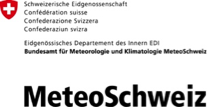
News from MeteoSwiss
Copernicus Climate Change Service (C3S): MeteoSwiss contributes to a new Alpine precipitation dataset and pan-European datasets comparison
MeteoSwiss participates in the C3Surf project (Copernicus Climate Change Service based on Surface in-situ Observations), led by the Royal Netherlands Meteorological Institute (KNMI). C3Surf will deliver a climate monitoring service over Europe and based on in-situ surface climate observations. New high-resolution gridded datasets will be generated building on the European Climate Assessment & Dataset (ECA&D) and E-Obs. In addition, two regional grids over the Alpine Region and Fennoscandia will be developed. MeteoSwiss contributes to the project with expertise on spatial analysis and will develop, in collaboration with the Austrian weather service (ZAMG), a centennial monthly precipitation dataset over the Alps based on the HISTALP dataset. Moreover, MeteoSwiss will lead a comparison of products generated in the project with already existing gridded regional datasets in order to detect uncertainties and to communicate them to users.

News from Empa
C2SM goes SDSC
SDSC stands for Swiss Data Science Center, it is the newly established Initiative for Data Science in Switzerland. SDSC issued its first call for proposals in July 2017. The project, “CarboSense4D: Four-dimensional mapping of carbon dioxide using a low power sensor network” is one of 12 out of 28 submitted projects that will be funded.
Directed by Dr. Dominik Brunner, Head of Atmospheric Modelling at the Swiss Federal Laboratories for Materials Science and Technology Empa, and member of C2SM, CarboSense4D will combine data science methods, atmospheric observations, and atmospheric transport modelling to determine the evolution of carbon dioxide (CO2) over Switzerland at high spatial and temporal resolution. Three hundred low-cost CO2 sensors distributed over Switzerland within in the framework of the ongoing external pageCarboSense projectcall_made will be used offering an unprecedented density of continuous CO2 observations. Accurate knowledge of the 4-D distribution of CO2 is of great interest to study anthropogenic CO2 emissions and exchange fluxes with the biosphere, for the validation of satellite CO2 observations and to provide lateral boundary conditions for models tracking city-scale CO2 emissions. CarboSense4D will also provide feedback to the sensor network itself through detecting and correcting changes in the behaviour of individual sensors. Furthermore, it will act as a proof of concept for the applicability of low-cost CO2 sensors in a machine learning framework and likely trigger similar sensor networks in other countries and regions. Overall, CarboSense4D will help improving our understanding of the regional carbon cycle and contribute to the independent validation of national greenhouse gas reduction pledges in the light of the international Paris climate accord.
The project will be realised in collaboration with SDSC who will provide a 100% staff for 24 months and C2SM who will devote 4 months on visualizing the scientific results of the project.

Update from SPARC, the international project on Stratosphere-troposphere Processes and their Role in Climate
This year, SPARC celebrates its 25th anniversary, and, after six years of operation in Zurich, the move of its International Project Office from ETH Zurich to the German Aerospace Center (DLR) in Oberpfaffenhofen - its 4th destination after Paris, Toronto, and Zurich.
EVENT: SPARC is organising its 6th General Assembly to be held in Kyoto, Japan, from 1-5 October 2018. General Assemblies are opportunities for SPARC to take stock of what has been achieved, where gaps in SPARC's research portfolio lie, and to define where SPARC needs to be moving to remain responsive to the needs of its stakeholders. The Conference is being held back-to-back with the Future Earth International Global Atmospheric Chemistry (IGAC) 2018 Science Conference and in parallel with the 2018 Joint Belmont forum/JPI-Climate meeting (Joint Programming Initiative “Connecting Climate Knowledge for Europe”). The 5-day event includes an earl career researchers programme and will attract over 350 participants from around the globe, from students to senior scientists and stakeholders. Find more information on the SPARC General Assembly 2018 at the SPARC General Assembly 2018 website.
2017 marks the 30th anniversary of the Montreal Protocol, the international agreement that has led to the phase-out of more than 99% of ozone-depleting chemicals and significantly contributed to climate change mitigation. Dr. Neil Harris, Co-Chair of the SPARC Scientific Steering Group, and colleagues at the University of Cambridge and National Centre for Atmospheric Science played a leading role in demonstrating the effect of man-made gases on the ozone layer, and the consequences for human health. Watch their video on “30 years of healing the ozone layer - how it all happened”.
Join the SPARC community and subscribe to the SPARC eNews bulletin and the SPARC newsletter or follow SPARC on Twitter or Facebook.
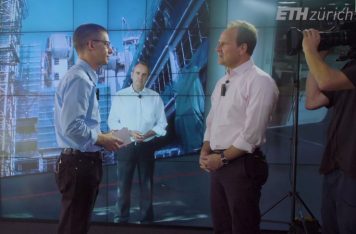
New climate science webcasts
Oliver Stebler, part of Reto Knutti's Climate Physics Group at ETH, helps to communicate climate science in his science webcasts ("external pageWerkstattgesprächecall_made"), where he interviews leading experts in climate research and climate related practice and industry. His most recent webcasts include:
- Die Stadt im Klimawandel. Cities cause climate change, but are also significantly affected by it. Prof. Nicolas Gruber, climate scientist and Scientific Director of C2SM, and Gerhard Schmitt, Director of the ETH research center in Singapore, engage in an interdisciplinary debate about cities and climate change in the new external pagescience webcastcall_made (in German).
- Fondue im „Swiss Camp“ (Grönland). Since 30 years, he has been exploring Greenland. The largest ice shield of the Northern Hemisphere has massively changed over this period of time. Prof. Konrad Steffen talks about his research not only to politicians like Al Gore or the Swiss Federal President, but also to Oliver Stebler in a Werkstattgespräch. Watch it at external pageClimate Science Visualscall_made (in German).
More climate science webcasts (in German) can be found on the Climate Physics Group's Werkstattgespräche page, or Oliver Stebler's page for climate science communication tools and multimedia productions.

PhD Defenses in the C2SM community
We congratulate our members for their successfully completed PhDs!
Pascal Graf, 13 November 2017, The effect of below-cloud processes on short-term variations of stable water isotopes in surface precipitation, supervisor: H. Wernli
Matthias Jochner, 1 November 2017, Treelines in the Swiss Alps: growth dynamics and forest succession in a changing climate, supervisor H. Bugmann
Bettina Meyer, 25 October 2017, Boundary-Layer Turbulence and Clouds in the Atmosphere: Prospects for Closures, supervisors: T. Schneider and C. Schär
Galina Timofeeva, 8 September 2017, Elucidating the drought response of Scots pine (Pinus sylvestris L.) using stable isotopes, supervisor: H. Bugmann
Dominik Büeler, 18 July 2017, Potential vorticity diagnostics to quantify effects of latent heating in extratropical cyclones: methodology and application to idealized climate change simulations, supervisor: H. Wernli
Remo Beerli, 13 July 2017, Sources of sub-seasonal predictability for energy industry-relevant weather events, supervisor: H. Wernli
Olga Henneberg, 30 June 2017, Orographic Mixed-phase Clouds in the Swiss Alps - Occurrence, Persistence and Sensitivity, supervisor: U. Lohmann
Christin Loran, 30 June 2017, Exploring long-term forest cover changes and their driving forces in Switzerland (1850-2000), supervisor: H. Bugmann
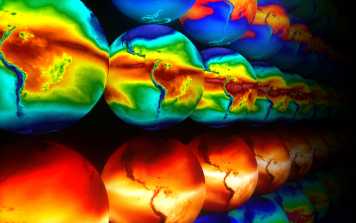
Upcoming events of interest
C2SM Workshops 2018:
- 15 January: Swiss COSMO User Workshop. The annual Swiss COSMO User Workshop will take place this year at the MeteoSwiss Zürich Airport location. The event is organized jointly by C2SM (Katie Osterried) and MeteoSwiss (Andreas Pauling). For more information please email .7/8 February: C2SM python workshop. C2SM, with support from the Land-Climate Dynamics Group at the Institute for Atmospheric and Climate Science, will hold a two-day workshop to introduce interested C2SM community researchers to visualisation in the Python programming language. More information can be found at the C2SM Python Workshop webpage. Registration is now open.
- June: The 2nd GCM User Meeting is planned as a one-day get-together of GCM and Earth System modellers of the C2SM community.
Announcement: Information event on data management in climate research:
Proper data management is a key prerequisite for effective data sharing and publishing, which in turn increases the visibility of one’s scholarly work and thus is likely to increase citation rates. Funding organizations like the external pageSwiss National Science Foundationcall_made or external pageHorizon 2020call_mademandate data management plans for projects they fund. The plans are sometimes already required in the proposal and should be updated throughout the project.
Together with the Digital Curation Office of ETH library, ETH Scientific IT Services (SIS), and in-house staff, we plan a half-day information and discussion event on data management in the climate modelling community for some time in January-March 2018. This event will especially address professors, group leaders, and senior staff of the C2SM community. We will notify you on the date and venue in due time before the event.
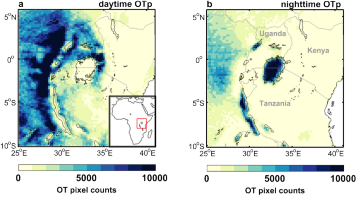
Paper: Towards an early warning system for severe thunderstorms on Lake Victoria
Lake Victoria in East Africa is a notoriously dangerous place for the 200,000 people who go fishing there at night. The International Red Cross estimates that between 3,000 and 5,000 fishermen per year lose their lives in violent storms on the lake [1]. Despite the lake’s long-standing bad reputation, a properly functioning storm warning system is currently lacking for the region. A new study [2] led by researchers from ETH Zurich now presents a prototype early warning systems. In particular, new satellite data (fig. 1) and climate simulations with COSMO-CLM² [3] revealed that afternoon conditions on land influence how strong nighttime storms on the lake will be, suggesting greater predictability than assumed so far. The new warning system exploits this predictability and relies on logistic regression to forecast extreme thunderstorms from satellite observations. Supporting ongoing efforts, this new system may help to reduce the vulnerability of local communities that live, work, and depend on Lake Victoria.
[1] International Federation of Red Cross and Red Crescent Societies, World Disasters Report 2014 (external pagehttp://www.ifrc.org/world-disasters-report-2014call_made)
[2] Thiery, W., Gudmundsson, L., Bedka, K., Semazzi, F.H.M., Lhermitte, S., Willems, P., van Lipzig, N.P.M., Seneviratne, S.I., 2017. Early warnings of hazardous thunderstorms over Lake Victoria, Environmental Research Letters, 12, 074012. (external pagehttps://www.theguardian.com/news/2017/aug/29/scientists-devise-early-thunderstorm-alerts-for-fishermen-in-africacall_made)
[3] Thiery, W., Davin, E.L., Seneviratne, S.I., Bedka, K., Lhermitte, S., van Lipzig, N.P.M., 2016. Hazardous thunderstorm intensification over Lake Victoria, Nature Communications, 7, 12786.

Paper: More frequent compound hot and dry summer extremes under increasing CO2 concentrations
A combination of a severe drought and a heatwave strongly affected Russia in the summer of 2010. The extremely dry and hot conditions led to widespread fires, damaging crops and causing human mortality. The wildfires also induced large-scale air pollution in cities such as Moscow, adding to the death toll of the event. In the past, climate scientists have tended to underestimate the risk of a compound heatwave and drought. ETH researchers Jakob Zscheischler and Sonia Seneviratne have now calculated the probability of compound hot and dry summers [1]. An extremely hot and dry summer is up to five times more likely than if these two extremes are studied in isolation. Compound extremes such as the event in Russia or the extremely dry and hot 2015 summer in central Europe [2] may thus occur much more frequently than previously expected. The authors also found that – in addition to long-term trends in temperature and precipitation – very hot and dry summers will become more common if climate change remains unconstrained. That means, that even if ecosystems and human societies adapt to a new climate, they have to face more frequent extremely hot and dry conditions.
[1] Zscheischler, J. & Seneviratne, S. I., 2017. Dependence of drivers affects risks associated with compound events. Science Advances, 3, e1700263, doi:10.1126/sciadv.1700263
[2] Orth, R., Zscheischler, J., and Seneviratne, S. I., 2016. Record dry summer in 2015 challenges precipitation projections in Central Europe. Sci. Rep., 6, 28334, doi: 10.1038/srep28334
ETH News article on future heatwaves and droughts (in German)external pageDeutschlandfunk article on increasing heatwaves and droughtscall_made (in German)external pageNDR broadcast on simultaneous heatwaves and droughtscall_made (in German)
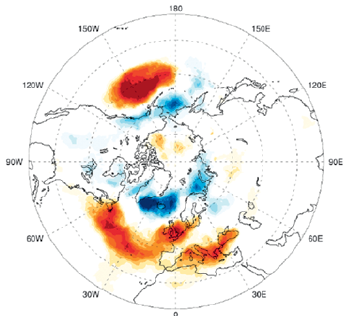
Paper: Global climatologies of Eulerian and Lagrangian flow features based on ERA-Interim
This paper introduces a newly compiled set of feature-based climatologies identified from ERA-Interim reanalyses (1979–2014). Two categories of flow features are considered: (i) Eulerian climatologies of jet streams, tropopause folds, surface fronts, cyclones and anticyclones, blocks, and potential vorticity streamers and cutoffs, and (ii) Lagrangian climatologies, based on a large ensemble of air-parcel trajectories, of stratosphere-troposphere exchange (STE), warm conveyor belts (WCB), and tropical moisture exports (TME). Monthly means of these feature climatologies are openly available at the ETH Zurich webpage http://eraiclim.ethz.ch and annually updated.
Sprenger, M., G. Fragkoulidis, H. Binder, M. Croci-Maspoli, P. Graf, C. M. Grams, P. Knippertz, E. Madonna, S. Schemm, B. Skerlak, and H. Wernli, 2017. Global climatologies of Eulerian and Lagrangian flow features based on ERA-Interim. Bull. Amer. Meteor. Soc., 98, 1739–1748, doi: 10.1175/BAMS-D-15-00299.1
